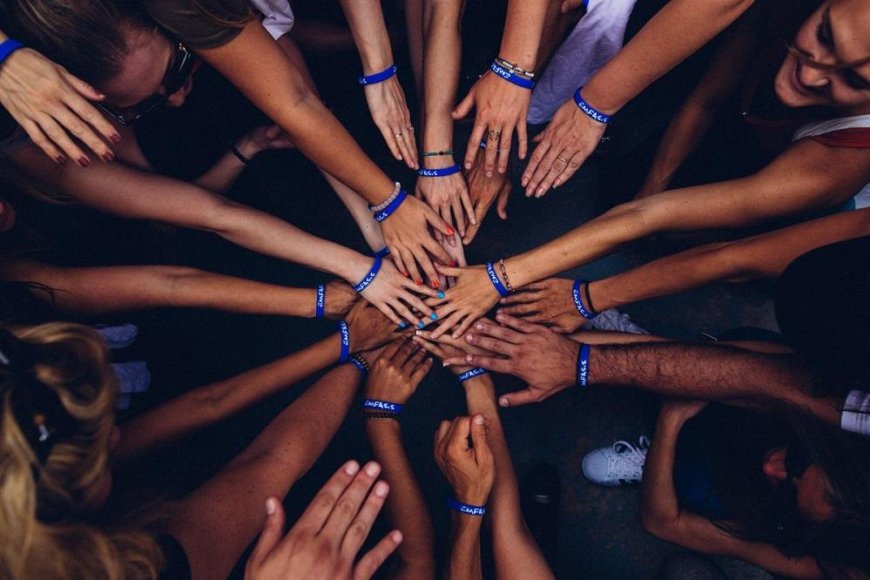Tolerance, fairness and diversity - the attitude counts
not even at school, a few ideas and facts about the great and beautiful topic of diversity. Tolerance, fairness and diversity - the attitude

Celebrating differences, learning from one another, being tolerant and curious - this is how we would wish for ideal social coexistence. But that doesn't always work out satisfactorily, not even at school, a few ideas and facts about the great and beautiful topic of diversity. Tolerance, fairness and diversity - the attitude counts.
What we mean by diversity
Diversity is quite normal. In many areas of life it is even expressly desired. Whether at lunch, planning your vacation or a morning stop at the bakery: We like it when we have a choice and would find it boring if everything always happened the same way. We appreciate a wide range of options and are used to a certain variety of offers. At least that is true for most people in this country and for most areas of our everyday life.
But this diversity also presents us with new challenges. Some things are more confusing and demanding than they were a few years ago. A multitude of possibilities can also lead to confusion and uncertainty.
If you look at the interpersonal level, diversity often scares us. In social interaction, we like to look for the familiar, familiar and are much more open-minded when something sounds familiar or fits our ideas. That gives us security. But especially when it comes to interpersonal relationships, diversity is an enormous asset! Just thinking within your own, accustomed limits is not enough. In this context, there is often talk of diversity (diversity, variety, difference) - a concept from social psychology that has its origin in the civil rights movement in the USA. Diversity is not a new term or a trend, but a sign of healthy social development.
In addition to diversity, terms such as heterogeneity and inclusion have established themselves in the school environment. Of course there are subtle differences in the definition of these terms, but much more important for you as a teacher is the general attitude that underlies all these concepts. Questions like:
- What philosophy do we live together at our school when it comes to diversity? How do we know that?
- Is this attitude firmly anchored in our mission statement?
- How do we treat each other and what values ‹‹do we convey?
- Do we focus on diversity as a development potential or is it more of a side issue?
Living diversity - noticeably different
Give it a try: lived diversity can be felt as awareness across all areas of everyday school life: in the staff room, in the classroom, in communication with parents, in human resources ... It relates, for example, to topics such as religion, ethical and Social origin, gender, gender identity, sexual orientation, various impairments, learning habits - in short: everything that distinguishes people in their diversity and individuality. How does it feel when you look at your workplace against the backdrop of diversity?
Must Read: Teacher Health “ What Makes Teachers Sick
It is not always possible to implement everything that teachers would like and students need in school practice. Sometimes individual needs and factors take a back seat in favor of practicality. This is where the special challenge of diversity-competent teaching and cooperation lies.
Trust instead of stigmatization
"For educational work, it is important to look at differences and similarities," says the website adult education.at explaining the term diversity. "The exclusive focus on difference often leads to the separation and categorization of social groups - a good basis for stereotyping processes and conflicts. If the focus is on the similarities, this promotes constructive relationships and trust. It is therefore helpful for the counseling and educational context to work with a diversity understanding of differences and similarities. Because looking at the similarities very often makes it easier to deal with differences in the social system. "
For you as a teacher it is important not to follow the impulse to focus primarily on deficits, but to reflect again and again:
- What do we have in common
- What are the advantages of being different?
- What causes exclusion and discrimination and what can we do about it?
- What can we learn and improve as a school?
As is often the case, the key to addressing these issues is communication. It is therefore important to regularly create space for the topic of diversity in everyday school life. The exchange of different points of view creates mutual understanding, which in turn reveals potential for change and opportunities. In this way, individual talents can be recognized and specifically promoted.
In the economy, the strategy of diversity management is even more important than in the education sector for the profitable use of different resources. In terms of content, however, the tasks and advantages can be transferred very well to the school environment. An example: In order to understand and resolve conflicts, diversity skills are essential.
Evaluate and grade fairly
When it comes to heterogeneity and diversity, the concept of fairness also plays a major role. Whether students get a good grade, does not always depend only on her performance. "Prejudices play a decisive role in the assessment
With regard to diversity, it is clear that it is always worthwhile to take on new perspectives, to change perspectives and to question your own inner attitude. Because diversity always begins with oneself - because everyone is very diverse in themselves. So it is a nice and meaningful task to be permanently involved, to educate and to open up.
